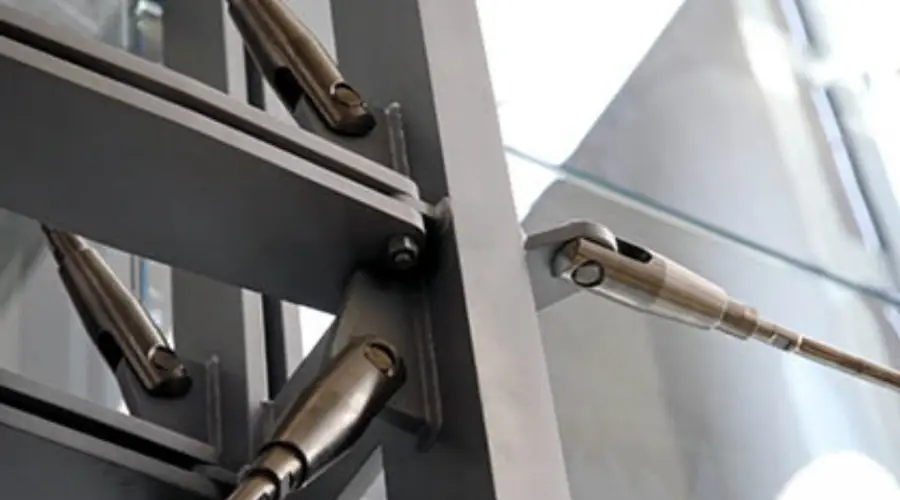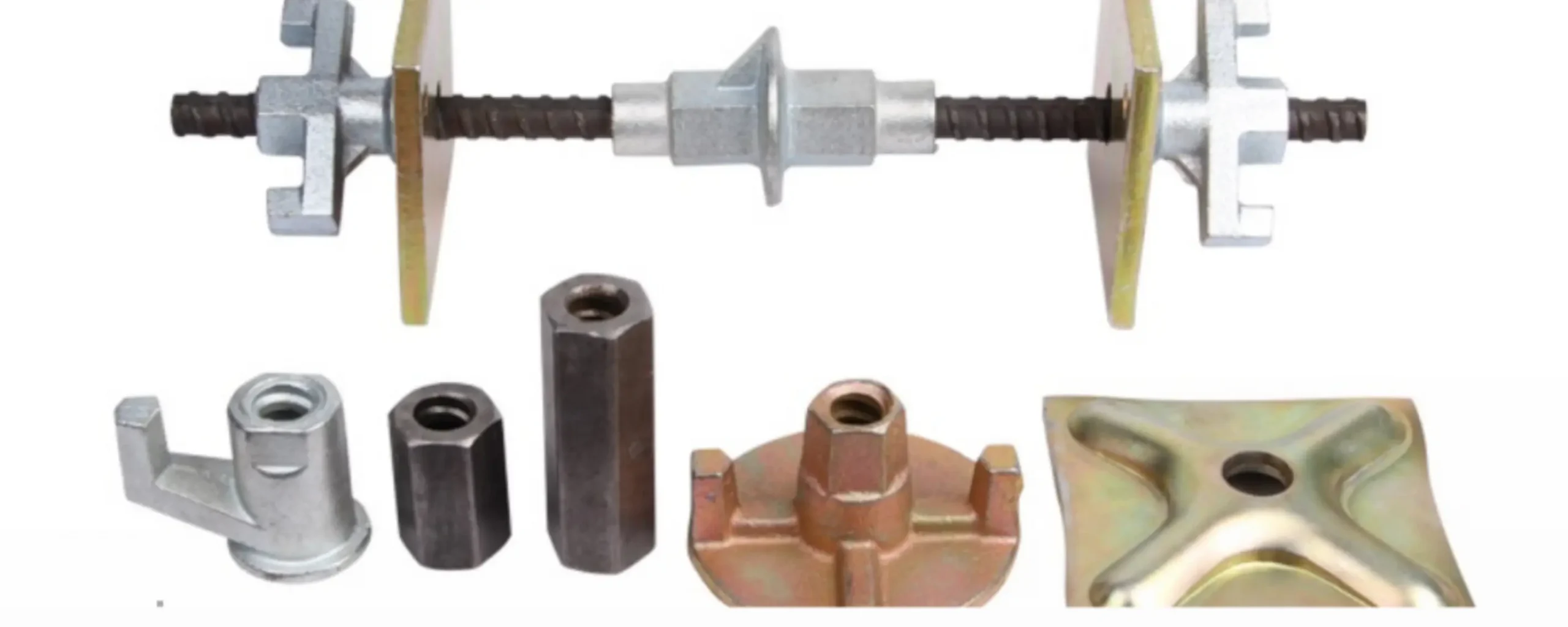Tie rods in the construction sector provide integrity and stability to structures, enhancing their overall stability and strength. These tie rods can be used for small residential buildings as well as large-scale commercial buildings. Their tendency to bear tensile strength prevents the separation of two parts in construction designs, acting in conjunction with other structural elements. Some common places in structural systems where tie rods are used are retaining walls, formwork, and concrete structures. They provide workers with strong and trustworthy scaffolding to move around and are considered an essential component of scaffolding structures.
What is a Tie Rod?
The main purpose of tie rods is to create a rigid connection between the scaffolding frames. The various components in the tie rods system include threaded rods, nuts, and plates. The load distribution of the scaffolding is achieved by inserting threaded rods through holes in scaffolding frames and tightening them with nuts and plates. In simple terms, tie rods are designed to withstand heavy loads and forces during the concreting process.
Materials Used for Tie Rods
The most commonly used material for tie rods is steel. There are different types of steel used in tie rods for various purposes. Some commonly used steel types are carbon steel, alloy steel, and stainless steel. Other materials include cast iron, aluminium, composite materials such as carbon fibre-reinforced polymer and glass fiber-reinforced polymer, bronze or copper alloys, titanium, concrete, wood, and galvanized or coated materials. Each of these materials has specific properties and constructors choose the most suitable material to suit their project design and requirements.
Types of Tie Rods in Construction
In the construction sector, several types of tie rods are used. Some preferentially used tie rods are
Solid Tie Rods: These types of tie rods are preferred in small-scale projects or where the space is limited. The usage of single pieces of steel makes them a compact piece ideal for smaller spaces.
Threaded Tie Rods: The special feature of this type is the adjusting and tensioning feature. The threaded rod and nuts enable easy adjustment of length and tension.
Grouted Tie Rods: If the structures need additional strength and stability, grouted tie rods are preferred. The holes are filled with grout or concrete along with nuts and washers to increase the stability of the structure.
Applications of Tie Rods in Construction
- Tie rods are used in suspension and cable-stayed bridges to hold the deck and in arch bridges to withstand horizontal thrust and tension.
- As a connector in roof structures to resist tensile strength and even support large-span roofs in warehouses, factories and stadiums.
- In retaining walls, as they counter lateral earth pressure and provide anchoring support to the structure.
- During casting of concrete, tie rods are used to hold formworks and provide stability and alignment to formwork.
- They provide requisite resistance to tall buildings against wind and seismic forces.
- Tie rods are even used in marine and offshore structures such as docks, jetties, and marine platforms.
- Even tunnels and subways include tie rods as supporting structures.
Installation of Tie Rods in Construction

- The effectiveness of tie rods increases with careful planning and execution of the structure. Some steps that need to be remembered to enhance the effectiveness are:
- Based on the specific requirements, a qualified engineer should prepare the design of rods.
- Before installing the prepared design, preparatory work such as clearing the shuttering where this needs to be installed must be done. This will enable easy access to the location.
- Following this, holes are drilled in the walls to insert tie rods into the walls or structures.
- To ensure that the inserted rods remain in place, nuts and washers are used to achieve the tightness to create a stable structure.
- In some cases, along with nuts and washers, grouts or concrete are injected into the holes to provide additional support. This method is used in grouted tie rods.
Advantages of Using Tie Rods
- Tie rods can withstand significant tensile force and provide the necessary strength and stability for heavy structures.
- Tie rods prevent the deformation of the structure and maintain stability, enhancing the integrity of frameworks.
- Tie rods are not restricted to specific structures. Their versatility makes them suitable for any structures ranging from bridges, retaining walls, roofs, tunnels, and decorative structures.
- Tie rods are customisable. This provides the constructors with the choice of fabricating it to a precise length and diameter.
- Use of aluminium or composite materials in tie rods will reduce the overall weight of the structures.
- The cost of tie rods is economical in comparison to other structures that provide resistance to tensile stresses.
- Galvanised or stainless steel as materials in tie rods will negate the possibility of the structure getting corroded.
- It distributes load evenly, reducing stress on one particular point. It can even handle vibrations and dynamic loads.
Design Considerations for Tie Rods
Aspects that need to be considered in the design stage are the capacity to handle tensile strength, dynamic loads, factors of safety, the strength of the material, how resistant the material is against corrosion, usage of lightweight materials to reduce dead load, diameter and cross-section of the rod, rod length and adjustability, choosing suitable end fittings, anchorage design, alignment, and using corrosion protection materials.
Maintenance of Tie Rods
The effectiveness and longevity of a tie rod can be retained with regular maintenance. Some measures to ensure tie rods are intact without any damage include regular inspection, cleaning, and repairs. The periodic inspection practice will help us to find signs of corrosion or damage. The settlement of dirt and debris is a major cause of corrosion. This could be prevented with the regular cleaning of the tie-rods structure. If any faults or damages to the structure are found, prompt actions to repair or replace the damaged elements must be taken. This will prevent future structural issues.
Conclusion
Tie rods are important in modern construction, they supply crucial tensile strength and stability to various structural designs across a range of applications. They are adaptable and versatile, useful from houses to large-scale infrastructure projects such as bridges, retaining walls, and offshore platforms. The right material, detailed design, and scheduled maintenance can ensure that tie rods provide high safety levels, strength, and performance of a structure. With advances in materials and technology, tie rods are also being continually improved, to offer customised, lightweight, and more corrosion-resistant alternatives for use in a diverse array of construction projects today. Due to their cost-effectiveness and reliability, they are here to stay, building stronger and more durable structures for generations to come.

